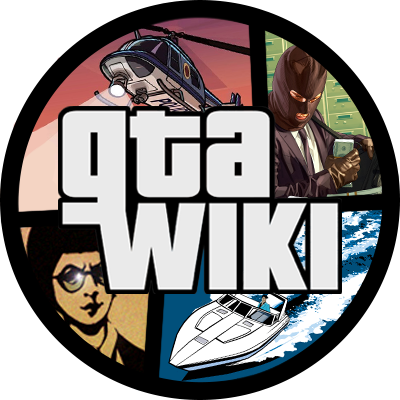(Rewrite (seriously). Sole image will serve as placeholder until newer images come along.) |
(Rewrite (seriously). Sole image will serve as placeholder until newer images come along.) |
||
| Line 20: | Line 20: | ||
* The passenger coach; |
* The passenger coach; |
||
* Freight cars; and |
* Freight cars; and |
||
| + | * A [[wp:flatcar|flatcar]]. |
||
| − | * A flatbed car. |
||
In each district of [[Anywhere City]], the Trains that appear in the city's various train lines may come with different combinations of train sets, either serving to carry passengers, or carry passengers ''and'' freight, to which point the locomotive will appear with the aforementioned freight cars, flatbed car, or both. The player can only access a Train via any of its passenger coaches, so the freight-based cars are of little use. |
In each district of [[Anywhere City]], the Trains that appear in the city's various train lines may come with different combinations of train sets, either serving to carry passengers, or carry passengers ''and'' freight, to which point the locomotive will appear with the aforementioned freight cars, flatbed car, or both. The player can only access a Train via any of its passenger coaches, so the freight-based cars are of little use. |
||
Revision as of 11:48, 19 November 2009
A Train in GTA 2.
In Grand Theft Auto 1, Grand Theft Auto 2, Grand Theft Auto III Grand Theft Auto: Liberty City Stories, a Train refers to rail-based transport that allows the player to travel all over the games' respectable sections of a city. Their purpose is largely as an alternate means of reaching from one of point of the city to another, avoiding the need to travel by car and navigate along streets and traffic to reach the same location. The convienience of riding a train is offset by their sporadic coverage in the city, which often features only a handful of stations along each line.
Description
GTA 1
For GTA 1, Trains are designed as passenger based vehicles that allow players and NPCs to move between various underground and elevated stations scattered all over the city, consisting of a single locomotive pulling three passenger cars. Players simply enter or exit a passenger coach the same way their do with any road vehicle, but can only do so when the Train has come to a stop at the station; from that point on, players may continuously ride the train until they alight at a station.
A minor quirk on Trains in GTA 1 is the ability to hijack them in the PC version. In order to do this, players must first be within a Train's passenger coach. By simultaneously pressing the Ctrl and Enter keys, the player gains control of the locomotive, allowing them to control the train's speed as well as their direction along the tracks (forwards or backwards). However, the player must be aware of another Train along the track, as Trains are very sensitive to crashes; a simple collision can destroy both trains in an explosion, killing the player inside. Likewise, trains can be damaged if they collide with any vehicle along the line, or sustain damage from gunfire, ultimately leading to it blowing up.
Trains are only available in Liberty City and Vice City, as San Andreas is presumed to originally intend to include the Tram instead but decided against it for the final version of the game. Trains in Liberty City are blue, while trains in Vice City are red.
GTA 2
For GTA 2, Trains are cosmetically redone in the tone of the game's retro-futuristic setting, while retaining much of their core characteristics of its previous renditions in GTA 1; however, players can no longer hijack trains, although they remain equally destructible.
In GTA 2, the type of train cars were expanded, consisting of up to four different models:
- The locomotive;
- The passenger coach;
- Freight cars; and
- A flatcar.
In each district of Anywhere City, the Trains that appear in the city's various train lines may come with different combinations of train sets, either serving to carry passengers, or carry passengers and freight, to which point the locomotive will appear with the aforementioned freight cars, flatbed car, or both. The player can only access a Train via any of its passenger coaches, so the freight-based cars are of little use.
Trains in GTA 2 also travel much faster, and adopt at-grade, elevated or underground lines to travel around the city. Their frequency of arrivals at station is also better than in GTA 1.
GTA III and GTA Liberty City Stories
Main articles: Portland El and Liberty City Subway
In GTA III and GTA Liberty City Stories, the games' rendition of Liberty City features two train lines which rolling stock consists of two-to-three car electric trains that unusually only utilize one track, despite the tracks featuring two.
The Trains are designed as generic subway trains, complete with visible driver's cabs and an interior decorated with seating and advertising. Unlike Trains in previous games, the Liberty City Trains are indestructible; neither can the player commandeer the trains, limiting the player to riding them. While the train travels from one station to another, the journey is played out in cutscene form.
Trivia
- Only the station portion of the train tracks in GTA 1 and GTA 2 can be ventured by the anyone, but that too can pose a threat to both the player and NPCs. Because the tracks are electrified, anyone who steps on the tracks for too long will be electrocuted for a few seconds, leading to death. It is thus important for the player to exercise caution when traversing the tracks. This feature is absent in train tracks after.
See also
- Train, listing other forms of trains in the GTA series.
